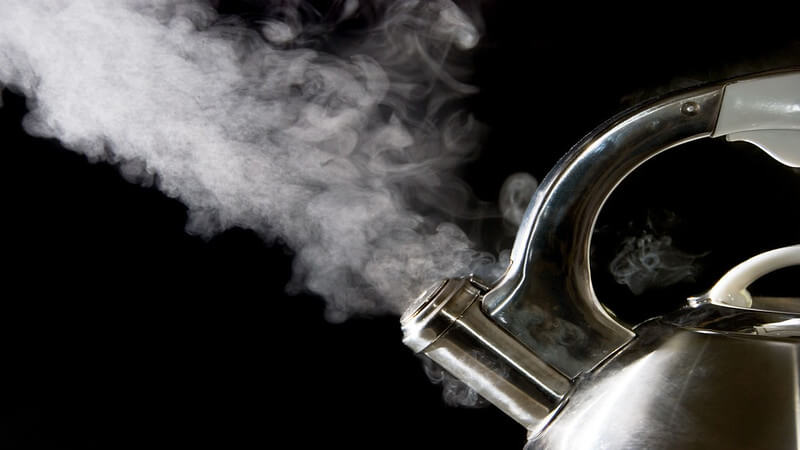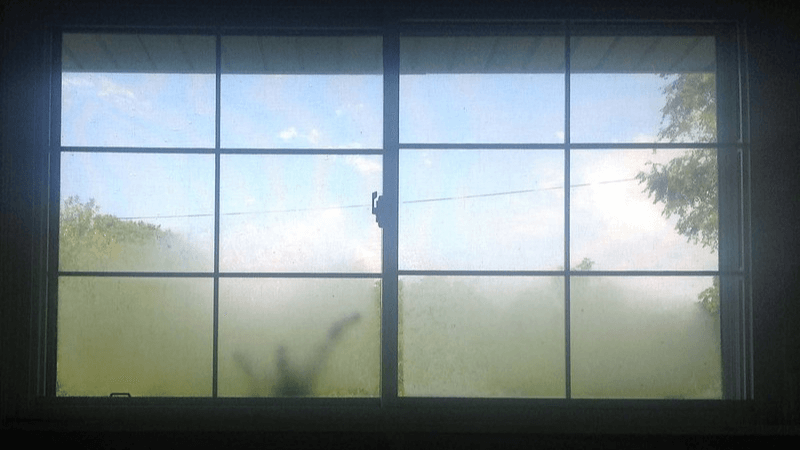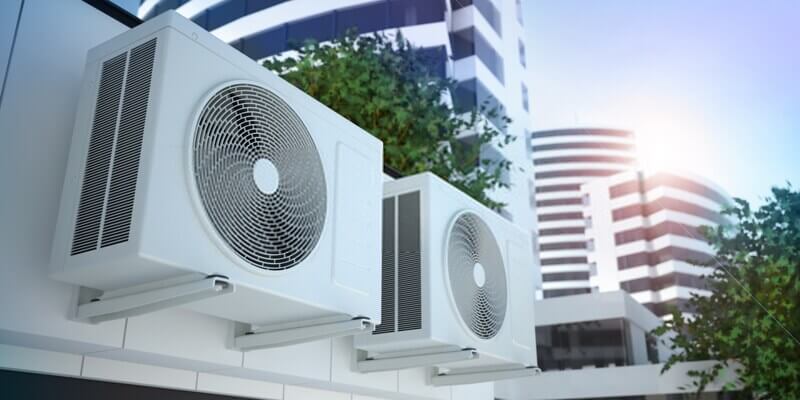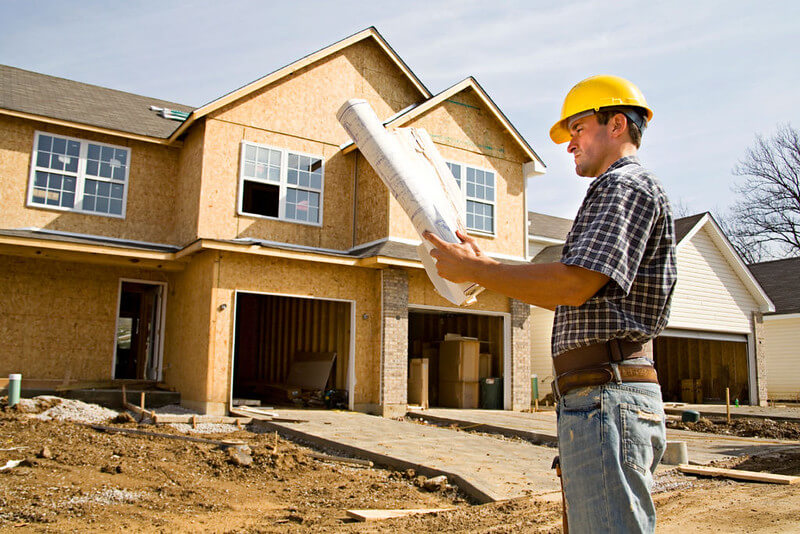Condensation on windows, bubbling paint, and mold build-up are some signs of high humidity in your home. High humidity levels over time can damage your home’s structure, appliances, and furniture, but more importantly, your health could be at risk. If your home feels too humid, there could be several sources you can check out and fix. In this post, I’ll discuss the possible causes of high humidity in your home, plus some additional steps you can take to bring it down.
1. Oversized Air Conditioner
When it comes to air conditioning, a bigger size is not always better. An oversized air conditioner in your home will cool down too fast and in short cycles, then turn off. Why is this a problem?
An air conditioner not only cools down your home but can also help remove moisture from the air. An air conditioner removes moisture as air passes through cold evaporator coils. Because the evaporator coils are colder, moisture condenses and is collected or passed through an air conditioner’s drain line.
An air conditioner needs time to dehumidify. The longer it runs, the better it removes moisture from the air. The problem with an oversized air conditioner is it runs too fast in short cycles. This leaves less time to dehumidify, and moisture is re-circulated back into your home.
Besides moisture problems, an oversized will lead to temperature inconsistencies and increased electric bills because the system is constantly starting and stopping during short cycles.
2. Climate
Climate is defined as the long-term average weather in a place. Climates can be classified according to meteorological variables like temperature, precipitation, humidity, atmospheric pressure, and wind.
The climatic conditions of the place you live can directly influence how humid your home gets. For example, in Florida, the humidity in a home will be higher than that of a home in New England. In Texas, where it is hot like Florida, it is dry. If you live in a climate that has high humidity like Florida, it is most likely your home will also be humid.
Coastal areas and areas that experience high rainfall will also impact the humidity levels in your home.
3. Everyday Activities
Our daily activities can also increase the moisture in our homes. This is especially if these activities give off a lot of moisture. Some activities that can increase humidity in your home include taking long hot showers, boiling water or cooking, drying laundry inside, and using gas heaters.
Taking a shower makes bathrooms often very humid places. As the moisture mixes with air, it can move to other areas in your home, thus increasing the humidity. One way of tackling moisture from taking baths is by installing a bathroom exhaust fan. A bathroom exhaust fan, unlike normal fans, works by pulling out excess moist air outside and limiting moisture build-up in your home. Taking cold shorter showers when possible can also reduce the moisture released into the air.

Boiling water or cooking can also add moisture to the air as the water evaporates. Installing a kitchen exhaust hood can help direct excess moisture outside. Slow cookers, which give off less moisture than stovetop cooking and oven, is also a good way to go.
Gas heaters can also contribute to moisture problems because they release water vapor as a byproduct of combustion. If a room is not properly ventilated, or the gas heater is not flued, the water vapor and other combustion pollutants will be released directly into the room.
Another home activity that increases humidity is drying laundry inside. A load of laundry can release up to 2 liters of water. Drying your laundry indoors means you will be releasing up to 2 liters of extra water into the air for every load of laundry. Drying laundry outdoor should be a quick solution to this problem. You can also vent the dryer outside to release the moisture outdoors.
4. Rising Damp
Rising damp is a rare type of damp that occurs when moisture from the ground travels up via walls through a process called capillary action. Rising dampness varies depending on the groundwater level, pore structure of masonry materials, and evaporation rate away from the wall surface.
Including a rise in the humidity, rising dampness can also have several undesirable effects like decorative spoiling, erosion of building fabric, increased heat loss, and mold growth.
To treat rising damp, check the dampproof course (DPC) and ensure it is not bridged or destroyed. This should be your main culprit if the DPC is not in good condition. Contacting experts to treat the DPC membrane should solve your problems.
5. Leaks
Leaks around a water spot can also cause a rise in humidity. Check your home and ensure there are no leaks around ductworks or pipes that carry water. If the problem is a water leak, the best thing to do first is to turn off the water to reduce the chance of more destruction and wasted water.
If you fix the leak yourself, dry the area thoroughly, and replace any moldy materials. Minor leaks can be fixed by caulking, but extensive work might require experts. If the area has significant water damage or mold, it might need to be remediated.
6. Bad Ventilation
A simple task like opening windows and doors can reduce moisture build-up in your home.
Proper ventilation is one of the factors that will influence the humidity level and air quality in a home. When the ventilation is good, air circulates and refreshes itself. As air moves around, it will also carry away excess moisture, thus preventing excess moisture. With bad ventilation, humidity build-up is not inevitable.
Rooms where moisture is regularly created, like kitchens, laundry rooms, and bathrooms, should be properly ventilated.
Installing vents and exhaust fans is one way of improving ventilation. Opening windows and doors and placing fans around your home will also improve air circulation. Running the air conditioner should also work.
7. An Abundance of Indoor Plants
Plants can be a source of humidity. Plants lose water through transpiration, which adds water vapor to the atmosphere.
The more indoor plants you have, the more they transpire, and the more the humidity levels rise. If you want to increase humidity, plants are a good natural source. However, keeping plants outside is the best thing to do if you have high humidity problems.

Plants such as Peace lily, Dracaena, Spider plant, and Calatheas can add more moisture to your home. Watering the plants excessively can also increase humidity through evaporation of water through the soil.
8. Renovations
Home renovations are good because they improve the property. However, home renovations can also become a source of moisture and other unwanted effects. If materials such as plaster cement do not have enough time to dry, they can remain humid, which can later cause problems.
Proper ventilation is advised when renovating or leaving enough time for the materials to dry.
Tackling Indoor Humidity
The most obvious way of reducing humidity in your home is by using a dehumidifier. Dehumidifiers are very useful, especially in crawl spaces and basements that are humid or feel damp all year round. You can find different dehumidifier options for almost every area of your home. For a good dehumidifier, check out the hOmeLabs HME020030N Dehumidifier.





